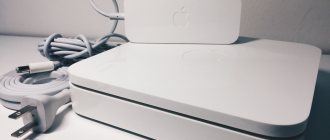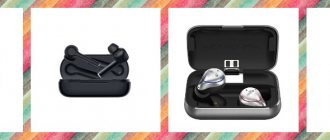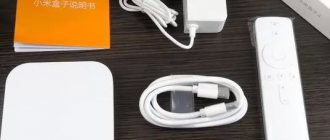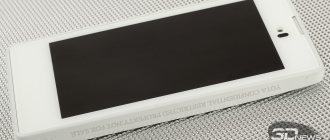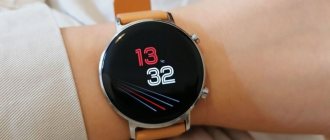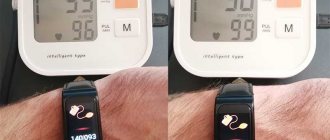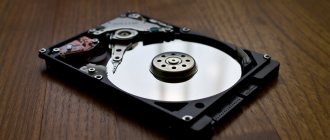Compact storage devices or USB flash drives appeared on the market in 2000. Today, many users use regular flash cards. However, with the advent of On-the-Go data transfer technology, new memory cards - OTG - appeared on sale. Let's look at what kind of device this is? What parameters should be taken into account when choosing?
OTG function in the phone - what is it and how does it work
Many people don’t know what it is - OTG in a phone, and assume that it’s just a cable.
But this is a little different. OTG is an extension specification for USB devices that contains a number of protocols and rules that compatible gadgets and cables must have. The abbreviation stands for On-The-Go, which can be translated as “On the Go.” It is based on the ability to connect other USB devices to mobile devices such as smartphones and tablets via an OTG adapter. What does it mean? The fact is that initially, for mobile gadgets, the USB protocol allowed a smartphone to be either an external storage device or simply a device with a battery that needed charging. That is, a tablet or smartphone always acts as a secondary device when connected via USB. OTG changed this approach, allowing mobile gadgets to become the USB host itself, which will be the main one, that is, peripheral devices will already connect to it. Naturally, for this, the gadget itself must support, that is, be able to work in this mode and connect to peripherals through a special adapter. We will talk about what it is - USB Host OTG support, and which gadgets have this.
How to connect various devices using OTG
Connecting different devices using an OTG cable is no different. It’s worth considering, using the example of a regular flash drive, how a user should make the connection:
- First, you should look at the wire for defects;
- If there are no defects, then you should insert the narrow end of the wire into the phone;
- Insert a USB flash drive into the other end of the cable;
- Within a few seconds, the device should detect the connection and display all the files that are on the flash drive.
The only thing is that some devices may not connect due to the fact that they require a special program. Special utilities are needed for printers, and sometimes for joysticks.
Which smartphones support the technology
For some reason, although the technology has been developed for a long time, very few devices support it. And as such, there is no OTG mode in gadgets, in fact, this only shows that support either exists or not. Even more strange is that the function is not always indicated in the device specifications, although there is the ability to connect at the hardware level. In general, all gadgets can be divided into three groups:
- supportive. Those devices on which it is clearly indicated, although also not always, that there is an OTG or USB host;
- There is a possibility of support, however, connection is not possible with standard software. That is, you need to install custom firmware or special applications;
- not supportive.
Here is a small list of new smartphones that have OTG support:
- Vivo S8, 6, Y81;
- BQ 5512 Strike Forward;
- Oukitel K7;
- Doogee BL9000;
- Xiaomi Mi6X, Redmi 5;
- Alcatel 3L 5034D;
- LG Q Stylus+;
- Nokia 6.1;
- Asus ZenFone 3 Max;
- ZTE Blade V9;
- Samsung Galaxy S9+;
- Huawei P smart, Honor 9 Lite.
What should I do if my phone does not support OTG? Unfortunately, nothing can be done if the hardware does not provide this for the manufacturer. Alternatively, you can use wireless interfaces to connect other devices.
Possible problems with OTG operation
The only possible problems are the cable not being connected. This can be influenced by many factors, including:
- The device does not support the technology. In this case, you need to either accept it or hack the phone and install root rights;
- The cable is broken. It's worth replacing it, they don't cost much;
- The connector is broken. In this case, you should contact a professional for repairs.
In other cases, this technology is working and multifaceted. It opens up new possibilities to make the device user pleasant and convenient.
Vyacheslav
For several years he worked in mobile phone stores of two large operators. I understand tariffs well and see all the pitfalls. I love gadgets, especially Android ones.
Ask a Question
Question to the expert
Why don't developers immediately build the port into the phone so as not to use additional adapters?
The question itself contains the answer: to begin with, such a design will take up a lot of space on the device body. As a rule, companies, on the contrary, try to make the thickness of the case much smaller, and if it is expanded for an adapter, then such a phone will not pay for itself. Also, such an adapter will take up a lot of battery space. This, among other things, is not beneficial for developers and users. The last final reason is that you can make good money selling such accessories, so the developers remain in the black.
What repair services work with connector repairs?
Almost everything. Repairing the connector is not as complicated a procedure as it could be.
Is there any point in repairing the cable?
There is no point, since such cables take a long time to repair and are cheap. You just need to buy a new one.
4.6/5 — (31 votes)
How to find out if a particular phone supports OTG
First of all, you need to familiarize yourself with the specifications of the smartphone. This can be done either on the manufacturer’s website or in the user manual. True, this may not be indicated there. As such, there is no function to enable OTG on Android; the connected peripherals are either detected or not.
You can also install special software for detection on Android, which is available in abundance on Google Play. Well, the most reliable way is to test the gadget on site along with an OTG cable, which can be bought almost everywhere and with any peripheral device.
What can be connected via OTG
Using an OTG adapter, you can connect any device with a USB output, but whether it will work depends on the specific smartphone.
List of supported devices:
- Flash drive
- HDD
- Mouse
- Keyboard
- Joystick
- Printer, etc.
The list can be supplemented at your discretion, but you can only check its performance experimentally.
Since flash drives are most often used for connecting via otg, many manufacturers began to produce them with universal connectors, allowing connection without the use of an adapter. You can find a large selection of such flash drives on ru.aliexpress.com
You can also find all kinds of OTG adapters there.
What devices and how can you connect to your phone?
All peripherals that have a USB port can, in theory, be connected to a smartphone. These can be mice, keyboards, flash drives, external hard drives, joysticks, modems, cameras and much more.
Hard drive and flash drive
Despite the fact that in many gadgets a flash drive can be read from a special slot, the same procedure via USB requires OTG. And if there are practically no problems with flash drives, then with hard drives it’s not so simple. The drive may not have enough power, and you will have to use an external power cable, which is also commercially available.
According to studies by a number of authoritative magazines, premium smartphones can easily be connected to hard drives not only of USB, but also of 2.5'' format without additional power, up to 1 TB. In general, OTG can be used for storage, but this does not mean that all hard drives support this format. Most often, additional power output is still required.
Mouse and keyboard
These two peripheral devices are more relevant for tablets with large diagonals, which are inconvenient to use with one hand while typing. However, you can also connect them to smartphones.
You can connect a mouse and keyboard via OTG either separately via a cable or together, but you will have to integrate a USB hub into the circuit. In general, this technology has serious competitors in this regard - wireless mice and keyboards that connect via Bluetooth and have their own power supplies. Maybe that's why OTG technology is not so popular?
Game joystick and printer
A joystick is a necessary solution for both tablets and smartphones. After all, it’s not always convenient to play games with a basic set, which, in essence, is software buttons on the screen. An external joystick is especially relevant when using various console emulators on devices - Dandy, Sega or others.
In general, you can connect the printer in the same way as to a PC. Naturally, it must have its own power source. In addition, you may need special software installed on the phone from the manufacturer.
3G and 4G modem and cameras
Despite the built-in support of these standards in almost all more or less modern smartphones, it may be necessary to connect an external modem. This could be an alternative solution for tablets that do not have a SIM card slot. However, you will have to download and install specialized software.
What characteristics are important
| Parameter | Description |
| Memory | The amount of data that the drive can store. The larger the capacity of the flash drive, the more information can be recorded and stored. The parameter directly affects the price of the device. The larger the flash drive, the more expensive it will be. |
| OTG connector type |
The MicroUSB interface is relevant for most modern smartphones and tablets. But many models now have the ability to connect external peripherals via the OTG port. It works via the usual MicroUSB connector. An OTG flash drive is indispensable if the device has the ability to operate in host mode. |
An external OTG drive can support the following interfaces:
| |
| Max transfer speed, data reading | An important parameter that affects the speed of reading, transmission, and exchange of information. However, often the actual figures are less than those indicated by the manufacturer. |
| Housing material | What a flash drive is made of affects its performance, reliability, protection from interference, and external factors. The most commonly used materials are:
|
| Protection from moisture and external influences | Most often, flash card connectors need protection from dust, moisture, and mechanical damage. For this, removable plastic caps are often used. Or a technology where the connector is pulled out before connecting a flash drive, and retracted as soon as it is removed from the device. There are also models of flash drives with a moisture-proof casing on sale. It protects not only from moisture, but also from aggressive environments. |
How to make an OTG cable with your own hands
You can assemble a simple cable for home use from old gadgets and adapters.
What materials and tools are needed for the job?
We will need any microUSB male type plug, USB type A female plug and a soldering iron. MicroUSB can be taken from an old charger or a cable from a smartphone. USB “Mom” from a USB extension cable. The soldering iron can be replaced with a glue gun.
Step-by-step instructions for making an OTG cable for your phone
The first thing to do is cut the USB extension cable to the size you need. The MicroUSB plug will have to be disassembled to gain access to the contacts.
Then you need to solder the wires from the USB extension cable to it according to the following scheme:
On the top of the diagram there is a simple cable pinout, and on the bottom - OTG. The only difference is that the two microUSB contacts GND and Sense must be connected to each other, then the device will recognize the cable. After soldering or gluing, the plug should look something like this:
Typically, the colors in a USB cable are arranged like this: red - 5+V, black - GND, white - for “-” data, green - for “+” data.
In fact, that's all. Additionally, the newly made OTG cable for a smartphone can be securely secured on top with electrical tape, and it will be ready for use. If you know interesting ways to make OTG cables, you can suggest your solutions in the comments.
